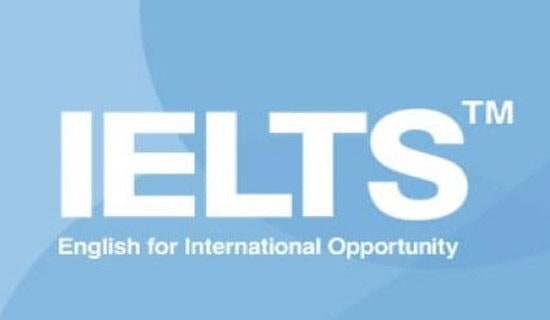- 相关推荐
雅思阅读真题及参考答案
无论是在学习还是在工作中,我们最离不开的就是考试真题了,借助考试真题可以更好地考查参试者所掌握的知识和技能。你知道什么样的考试真题才算得上好考试真题吗?下面是小编帮大家整理的雅思阅读真题及参考答案,欢迎阅读与收藏。

雅思阅读真题及参考答案 1
1.匹配题(MATCHING TASKS)。如给每段文章配标题。这要求同学们又比较强的总结判断能力。
2.多重选择(MALTIPLE-CHOICE TASKS)。如给出A,B,C三个答案, 选择正确答案。此类题型往往是考细节,所以大家要对本段的细节留心。基本上来说,这类题型的答案在文中会有比较规律平等的排布。
3.辨别正误(True / FALSE/TASKS)。
该题型还涉及到:(NOT GIVEN / NOT MENTIONED)没有提到,
有时还会出现下列提法:
ACCURAT / INACCURAT 精确/不精确
SUPPORTED / CONTRADICTED 一致/不一致
CORRECT / INCORRECT 正确与不正确
这类题型相对来说比较难,大家一定要注意忠于原文,跟原文意思完全一致的为正确,相反的为错误,原文中没有给出明确态度的为没有提到。大家要特别警惕那些跟原文只有一两个单词误差的选项,往往都是陷阱所在。跟原文一致的答案往往通过另一种句式或者措词表达出来。
4.填空(GAPFILL)。有时要根据文章内容选择词或短语填空,有时会给出一些词或短语进行填空。其实也要根据文章内容来填空,定位的能力非常重要。有时候也需要作出一些判断确定最后的答案。
5.完成句子(SENTENCE COMPLETION TASKS)。即先给出句子的一部分,未给出部分在文章中找出,或者给出2-3个答案,由你选择一个。这种题型较难,宜多加练习。
6.完成图表、示意图(TABLE、CHART OR DIAGRAM COMPLETION)。 这部分题型是要根据文章所给出的信息,将图表内缺失的内容(或数据)填补出来,大家需要掌握的是定位的能力,相对来说还是比较容易掌握的'。
7.回答问题(SHORT-ANSWER QUESTION TASKS)。回答问题在IELTS阅读考试中属于较易回答的题型,通常在考试的前一部分出现。
对于上述几种雅思阅读题型,在答题时要采用不同的办法灵活处理。例如:
在回答完成句子这类题时,就要花一点时间仔细查看文章中的有关部分,根据要求,填写稳重给出的词,或者总结出符合要求的答案。
在回答匹配题时,就要在文章中快速找出关键词或短语,并围绕这些词或短语附近找出答案。
在回答填空题时,就要通读文章内容,按顺序回答问题。根据文章中所给单词或文章并利用词性找出答案,有时候由于字数限制,可能会要求大家稍微改变一下词性。
雅思阅读真题及参考答案 2
1. The failure of a high-profile cholesterol drug has thrown a spotlight on the complicated machinery that regulates cholesterol levels. But many researchers remain confident that drugs to boost levels of ’good’ cholesterol are still one of the most promising means to combat spiralling heart disease.
2. Drug company Pfizer announced on 2 December that it was cancelling all clinical trials of torcetrapib, a drug designed to raise heart-protective high-density lipoproteins (HDLs)。 In a trial of 15000 patients, a safety board found that more people died or suffered cardiovascular problems after taking the drug plus a cholesterol-lowering statin than those in a control group who took the statin alone.
3. The news came as a kick in the teeth to many cardiologists because earlier tests in animals and people suggested it would lower rates of cardiovascular disease. There have been no red flags to my knowledge, says John Chapman, a specialist in lipoproteins and atherosclerosis at the National Institute for Health and Medical Research (INSERM) in Paris who has also studied torcetrapib. This cancellation came as a complete shock.
4. Torcetrapib is one of the most advanced of a new breed of drugs designed to raise levels of HDLs, which ferry cholesterol out of artery-clogging plaques to the liver for removal from the body. Specifically, torcetrapib blocks a protein called cholesterol ester transfer protein (CETP), which normally transfers the cholesterol from high-density lipoproteins to low density, plaque-promoting ones. Statins, in contrast, mainly work by lowering the ’bad’ low-density lipoproteins.
Under pressure
5. Researchers are now trying to work out why and how the drug backfired, something that will not become clear until the clinical details are released by Pfizer. One hint lies in evidence from earlier trials that it slightly raises blood pressure in some patients. It was thought that this mild problem would be offset by the heart benefits of the drug. But it is possible that it actually proved fatal in some patients who already suffered high blood pressure. If blood pressure is the explanation, it would actually be good news for drug developers because it suggests that the problems are specific to this compound. Other prototype drugs that are being developed to block CETP work in a slightly different way and might not suffer the same downfall.
6. But it is also possible that the whole idea of blocking CETP is flawed, says Moti Kashyap, who directs atherosclerosis research at the VA Medical Center in Long Beach, California. When HDLs excrete cholesterol in the liver, they actually rely on LDLs for part of this process. So inhibiting CETP, which prevents the transfer of cholesterol from HDL to LDL, might actually cause an abnormal and irreversible accumulation of cholesterol in the body. You’re blocking a physiologic mechanism to eliminate cholesterol and effectively constipating the pathway, says Kashyap.
Going up
7. Most researchers remain confident that elevating high density lipoproteins levels by one means or another is one of the best routes for helping heart disease patients. But HDLs are complex and not entirely understood. One approved drug, called niacin, is known to both raise HDL and reduce cardiovascular risk but also causes an unpleasant sensation of heat and tingling. Researchers are exploring whether they can bypass this side effect and whether niacin can lower disease risk more than statins alone. Scientists are also working on several other means to bump up high-density lipoproteins by, for example, introducing synthetic HDLs. The only thing we know is dead in the water is torcetrapib, not the whole idea of raising HDL, says Michael Miller, director of preventive cardiology at the University of Maryland Medical Center, Baltimore.
(613 words nature)
Questions 1-7
This passage has 7 paragraphs 1-7.
Choose the correct heading for each paragraph from the list of headings below.
Write the correct number i-ix in boxes 1-7 on your answer sheet.
List of Headings
i. How does torcetrapib work?
ii. Contradictory result prior to the current trial
iii. One failure may possibly bring about future success
iv. The failure doesn’t lead to total loss of confidence
v. It is the right route to follow
vi. Why it’s stopped
vii. They may combine and theoretically produce ideal result
viii. What’s wrong with the drug
ix. It might be wrong at the first place
Example answer
Paragraph 1 iv
1. Paragraph 2
2. Paragraph 3
3. Paragraph 4
4. Paragraph 5
5. Paragraph 6
6. Paragraph 7
Questions 7-13
Match torcetrapib,HDLs,statin and CETP with their functions (Questions 8-13)。
Write the correct letter A, B, C or D in boxes 8-13 on your answer sheet.
NB You may use any letter more than once.
7.It has been administered to over 10,000 subjects in a clinical trial.
8.It could help rid human body of cholesterol.
9.Researchers are yet to find more about it.
10. It was used to reduce the level of cholesterol.
11. According to Kashyap, it might lead to unwanted result if it’s blocked.
12. It produced contradictory results in different trials.
13. It could inhibit LDLs.
List of choices
A. Torcetrapic
B. HDLS
C. Statin
D. CETP
(by Zhou Hong)
Suggested Answers and Explanations
1. vi
2. ii
3. vii 本段介绍了torcetrapib和statin的治病原理,但是同时短语in contrast与之前第二段后半段的内容呼应,暗示了这两种药在理论上能相辅相成,是理想的搭配。第一个选项无法涵盖整段意义,故选择i是错误的。
4. iii 本段分析了可能导致torcetrapibl临床试验失败的'原因,后半段指出如果以上推测正确,那么未来的药物可借鉴这个试验,设法避免torcetrapib的缺陷,研制出有效的药物。viii选项无法涵盖后半段的意思。
5. ix 见首句。
6. v
7. A 见第二段。题目中administer一词意为用药,subject一词为实验对象之意。
8. B 见第四段… to raise levels of HDLs, which ferry cholesterol out of artery- clogging plaques to the liver for removal from the body.即HDLs的作用最终是将 choleserol清除出人体:… for removal from the body。
9. B 见第四段But HDLs are complex and not entirely understood.
10. C 见第二段… plus a cholesterol-lowering statin,即statin是可以降低cholesterol的。
11. D 见第六段 So inhibiting CETP, … might actually cause an abnormal and irreversible accumulation of cholesterol in the body.
12. A 见第三段。
13. C 见第四段Statins, in contrast, mainly work by lowering the ’bad’ low-density lipoproteins.
【雅思阅读真题及参考答案】相关文章:
雅思阅读真题06-17
雅思阅读真题练习10-25
雅思阅读真题训练12-05
雅思阅读考试真题10-06
如何利用雅思阅读真题11-04
A类雅思阅读真题训练10-11
2017年雅思阅读真题10-29
2024年雅思阅读考试真题11-26
雅思阅读真题的正确解题方式10-11
如何利用雅思阅读真题方法09-16






